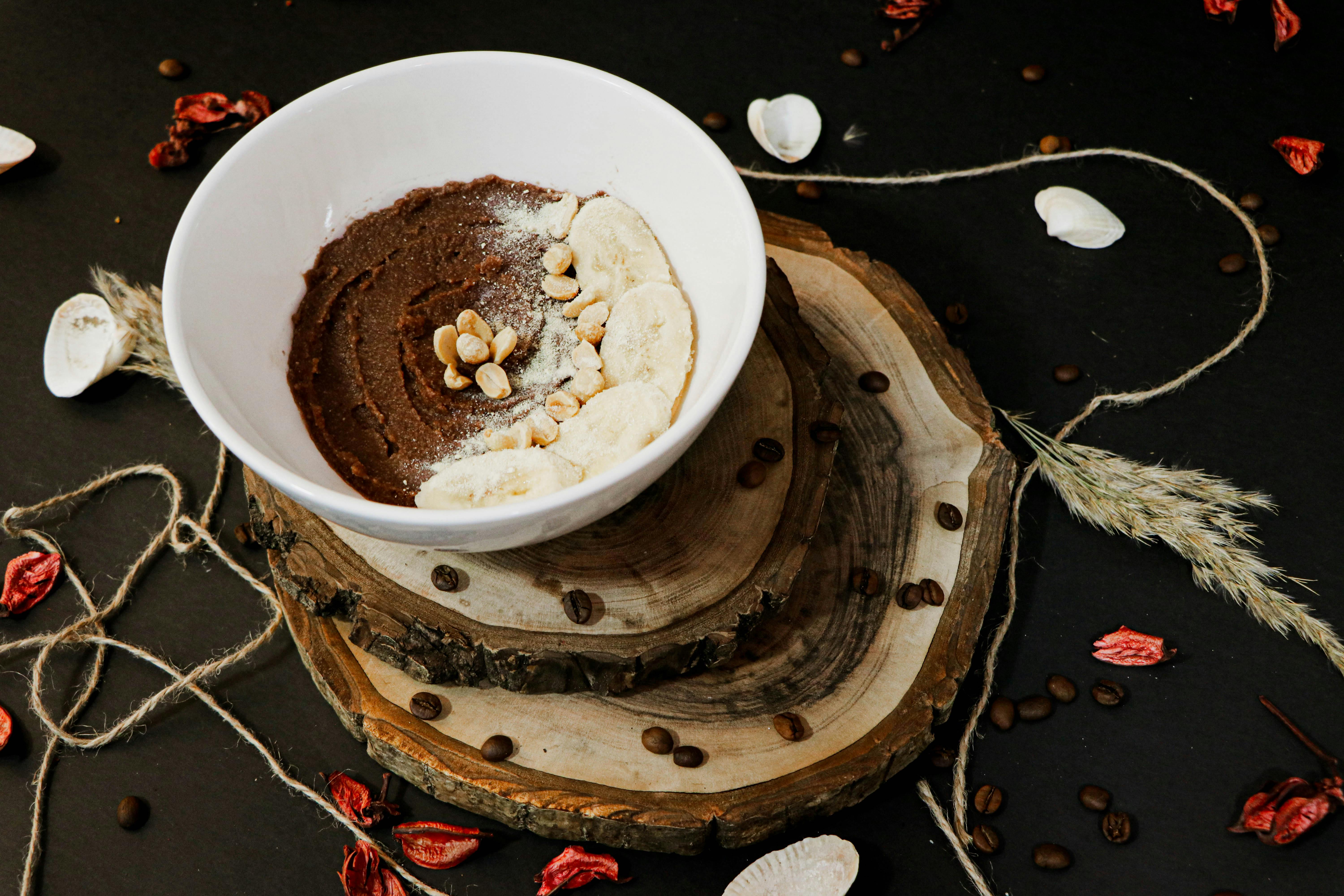Table of Contents
- 1. Grilled Lemon Herb Chicken with Roasted Vegetables
- 2. Quinoa & Kale Stuffed Bell Peppers
- 3. Baked Salmon with Sweet Potato Mash
- 4. Veggie Stir-Fry with Brown Rice
- 5. Lentil & Spinach Soup
- 6. Zucchini Noodles with Pesto and Cherry Tomatoes
- 7. Turkey and Cauliflower Rice Bowl
- 8. Stuffed Eggplant Parmesan
- 9. Mediterranean Chickpea Salad
- 10. Shrimp & Veggie Skewers
As we step into 2025, embracing whole food dinner recipes has become more essential than ever for maintaining a healthy lifestyle. These recipes focus on natural ingredients, minimally processed foods, and balanced nutritionâperfect for those looking to improve their diet without sacrificing flavor. Whether you’re a busy professional or a home cook, incorporating these wholesome meals into your weekly plan can boost energy, support digestion, and promote overall wellness. Throughout this guide, I’ll share my favorite whole food dinner recipes that are not only delicious but also easy to make and packed with nutrients.
1. Grilled Lemon Herb Chicken with Roasted Vegetables
Flavorful Marinade for Chicken
This recipe starts with a simple marinade using fresh lemon juice, garlic, olive oil, and herbs like rosemary and thyme. Marinating the chicken for at least an hour allows the flavors to penetrate deeply, making every bite bursting with freshness. In 2025, using whole food ingredients like fresh herbs and organic lemons is more accessible than ever, giving your meals a vibrant, natural taste.
Grilled correctly, the chicken remains juicy and tender, providing a satisfying main dish. Pairing it with roasted seasonal vegetables like carrots, zucchini, and bell peppers creates a colorful and nutritious plate. This meal emphasizes whole food dinner recipes that prioritize minimally processed ingredients, supporting a balanced diet.
Cooking Tips and Variations
For best results, use a high-quality grill or grill pan, and preheat it well to ensure grill marks and even cooking. You can also swap chicken with turkey or tofu for variety while maintaining whole food principles. Incorporate herbs like parsley or basil for added freshness. Serving with a side of quinoa or brown rice can round out the meal for extra fiber and nutrients.
2. Quinoa & Kale Stuffed Bell Peppers
Nutritious Stuffing with Whole Grains and Greens
Stuffed peppers are a fantastic way to incorporate whole food dinner recipes into your weekly rotation. This recipe combines protein-rich quinoa with nutrient-dense kale, cherry tomatoes, and a splash of olive oil. Quinoa is a complete plant protein, making it an excellent choice for vegetarians or those looking to boost their protein intake naturally.
Kale adds antioxidants, vitamins A, C, and K, and supports detoxification. Using fresh, organic vegetables emphasizes whole food integrity and maximizes health benefits. These stuffed peppers are both colorful and satisfying, perfect for a nutritious dinner in 2025.
Preparation and Serving Suggestions
Pre-cook the quinoa according to package instructions; opt for organic and non-GMO varieties. Sauté kale with garlic and onion for enhanced flavor and nutrient absorption. Stuff the peppers generously and bake until tender. For extra flavor, top with a small amount of grated cheese or nutritional yeast.
3. Baked Salmon with Sweet Potato Mash
Healthy Fats and Complex Carbohydrates
Salmon remains a staple in whole food dinner recipes because of its omega-3 fatty acids, which are crucial for brain and heart health. Baking salmon is straightforward and preserves the natural flavors and nutrients while avoiding added oils or fats. Pairing it with sweet potato mash offers a complex carbohydrate source that is rich in fiber, vitamins, and minerals.
In 2025, sustainably sourced wild salmon is more available, ensuring eco-friendly and healthy choices. Sweet potatoes are a versatile root vegetable that can be prepared quickly, making this a practical yet wholesome dinner option.
Cooking Method and Nutritional Benefits
Bake the salmon at 375°F (190°C) for around 15-20 minutes, seasoned with herbs and a squeeze of lemon. Meanwhile, peel and boil sweet potatoes until soft, then mash with a touch of olive oil, cinnamon, or spices. This meal provides a balanced mix of healthy fats, complex carbs, and essential nutrients, epitomizing whole food dinner recipes for 2025.
4. Veggie Stir-Fry with Brown Rice
Colorful Vegetables and Whole Grains
A vegetable stir-fry is a quick, versatile, and nutrient-packed dinner. Use a colorful mix of broccoli, snap peas, bell peppers, carrots, and mushrooms. The key is to use whole food ingredientsâfresh and minimally processedâso that each serving is loaded with vitamins and antioxidants. Brown rice adds fiber and supports digestion, making it a wholesome base for this dish.
In 2025, organic vegetables and sprouted grains are more accessible than ever, allowing you to create quick meals that are both satisfying and nourishing. Stir-frying at high heat preserves nutrients and maintains vibrant colors and textures.
Flavor Enhancers and Tips
Use garlic, ginger, and a splash of soy sauce or coconut aminos to add depth of flavor without compromising the whole food philosophy. Preparing grains in advance can save time. Serve with a sprinkle of sesame seeds or chopped green onions for added flavor and nutrients.
5. Lentil & Spinach Soup
Hearty and Nutrient-Dense Soup
Lentils are a powerhouse of plant-based protein, fiber, and essential minerals. Combined with fresh spinach, garlic, onion, and vegetable broth, this soup creates a nourishing, filling meal aligned with whole food dinner recipes. Itâs also easy to prepare in one pot, making it ideal for busy schedules in 2025.
Research shows that incorporating legumes like lentils can help improve cardiovascular health and support healthy weight management. Using organic, dried lentils and fresh greens enhances the health benefits and flavor.
Preparation and Serving Ideas
Simmer lentils with onions and garlic until tender; add spinach just before serving to preserve nutrients. Blend part of the soup for a creamier texture, or leave it chunky for added protein and fiber. This soup pairs well with whole-grain bread and a side of mixed greens.
6. Zucchini Noodles with Pesto and Cherry Tomatoes
Low-Carb and Fresh Flavors
Zucchini noodles, or “zoodles,” are a popular whole food dinner recipe alternative to pasta. Tossed with homemade basil pesto and cherry tomatoes, this dish is light, flavorful, and packed with nutrients. Itâs ideal for a quick, 2025-friendly meal that emphasizes fresh, whole ingredients.
Making pesto from fresh basil, garlic, olive oil, and nuts or seeds aligns perfectly with whole food principles. Using spiralized zucchini keeps the dish low-carb but still satisfying, especially when combined with protein sources like grilled chicken or tofu.
Huge Discount on the Best Certified Organic Whole Food Supplement!
Preparation and Serving Tips
Spiralize fresh zucchini and toss with pesto and halved cherry tomatoes. Serve immediately to prevent sogginess. You can also add a sprinkle of nutritional yeast or grated cheese for added flavor.
7. Turkey and Cauliflower Rice Bowl
Lean Proteins with Vegetables
This dish combines lean ground turkey seasoned with herbs and spices, served over cauliflower riceâan excellent low-carb, whole food alternative to regular rice. Cauliflower is a cruciferous vegetable rich in antioxidants and support for detoxification processes.
In 2025, cauliflower rice has become a staple in health-conscious kitchens. It’s easy to prepare by pulsing cauliflower florets in a food processor and sautéing briefly. Incorporating vegetables like bell peppers, broccoli, or snap peas further boosts the nutrient profile.
Cooking Tips and Variations
Cook the turkey in a skillet until browned; season with garlic, cumin, paprika, or turmeric for flavor. Meanwhile, prepare cauliflower rice, sauté it with a bit of olive oil, and serve the seasoned turkey on top. Garnish with fresh herbs and a squeeze of lemon for a fresh finish.
8. Stuffed Eggplant Parmesan
Plant-Based Version of a Classic
This recipe takes the beloved eggplant Parmesan and makes it entirely wholesome by avoiding processed breading and cheese. Instead, uses a mixture of whole grain breadcrumbs, herbs, and a tomato-based sauce, baked to perfection.
Eggplants are rich in fiber and antioxidants, supporting heart health and anti-inflammatory effects. Baking instead of frying maintains whole food integrity and reduces unhealthy fats. This dish is both hearty and nourishing, fitting perfectly into 2025’s healthy eating trends.
Preparation and Tips for Success
Slice eggplants thinly and bake or roast before layering with sauce and breadcrumb mixture. Use organic tomatoes for the sauce, and sprinkle with fresh basil. Serve with a side of leafy greens or a simple salad.
9. Mediterranean Chickpea Salad
Fresh and Protein-Packed
This Mediterranean-inspired chickpea salad is a quick, no-cook dinner thatâs loaded with flavor and nutrients. Chickpeas provide plant-based protein and fiber, while ingredients like cucumber, red onion, olives, and feta (optional) add freshness and richness.
For 2025, using organic chickpeas and locally-sourced vegetables enhances both taste and health benefits. This salad is highly customizable; add parsley, mint, or lemon juice to suit your palate.
Serving and Make-Ahead Tips
Prepare the salad a few hours in advance to allow the flavors to meld. Serve chilled with whole grain bread or crackers. Itâs perfect for a light dinner or a picnic-style meal.
10. Shrimp & Veggie Skewers
Grilled Seafood with Vegetables
Shrimp skewers are an easy, wholesome way to enjoy seafood and vegetables together. Use fresh shrimp, bell peppers, zucchini, and red onion for a vibrant, nutritious dish. Marinate the shrimp with lemon, garlic, and herbs to boost flavor naturally.
In 2025, sustainable seafood options are more available, making this recipe both eco-friendly and healthy. Cooking on a grill or broiler keeps fats minimal while adding smoky flavor. Pair with a side of wild rice or a greens salad.
Cooking Tips and Variations
Thread the shrimp and vegetables onto skewers for even cooking. Brush with a marinade and grill for 3-4 minutes per side. Serve hot with lemon wedges and fresh herbs for a satisfying whole food dinner.
Frequently Asked Questions (FAQs)
1. What are the benefits of choosing whole food dinner recipes?
Choosing whole food dinner recipes ensures you consume fewer processed ingredients, leading to better digestion, higher nutrient intake, and improved overall health. These meals can help support weight management, reduce inflammation, and boost energy levelsâespecially in 2025 when health trends continue to emphasize natural, unprocessed foods.
2. How can I incorporate more whole food dinner recipes into my weekly menu?
Start by planning meals ahead of time, focusing on fresh vegetables, whole grains, lean proteins, and healthy fats. Batch cooking and meal prepping are great strategies to make wholesome eating easier and more sustainable. Also, exploring new recipes and experimenting with seasonal ingredients keeps your meals exciting.
3. Are whole food dinner recipes suitable for all dietary restrictions?
Most certainly! Whole food recipes are customizable to accommodate vegetarian, vegan, gluten-free, or paleo diets. Using plant-based proteins like beans and lentils, or gluten-free grains such as quinoa, can ensure dietary needs are met without sacrificing the integrity of healthy, whole ingredients.
4. Why are whole food dinner recipes important for 2025?
In 2025, health consciousness is higher than ever, with scientific evidence supporting the benefits of minimally processed, nutrient-rich foods. Whole food dinner recipes help align with this trend by providing delicious, healthful options that support longevity, mental clarity, and physical well-being.
Conclusion
Embracing the best whole food dinner recipes for 2025 is a powerful way to prioritize your health while enjoying diverse, flavorful meals. From vibrant salads to hearty mains, these recipes demonstrate that nourishing your body doesn’t mean sacrificing taste. Incorporating such wholesome dishes into your weekly routine can lead to sustained energy, improved digestion, and overall wellness. Remember, the key to lasting healthy eating is choosing whole food dinner recipes that are accessible, satisfying, and easy to prepareâmaking 2025 your healthiest year yet!




